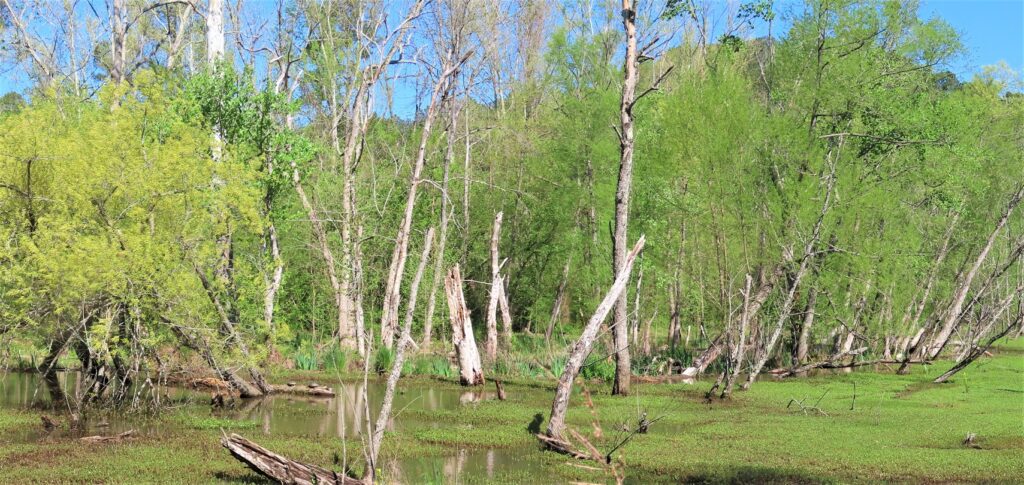By Bill Dunson
Photos courtesy Bill Dunson
A common theme of many issues surrounding the management of natural environments is how to compensate for the numerous negative impacts of civilization’s disturbance to land and waters without making things worse.
This discussion will deal primarily with the native Carolina Willow (Salix caroliniana) and Black Willow (Salix nigra). How should we manage willow? Willows are not normally grown as yard plants although another smaller obligate wetland species, the common Buttonbush (Cephalanthus occidentalis), with its spectacular globular flower clusters, has adapted well to yard culture.
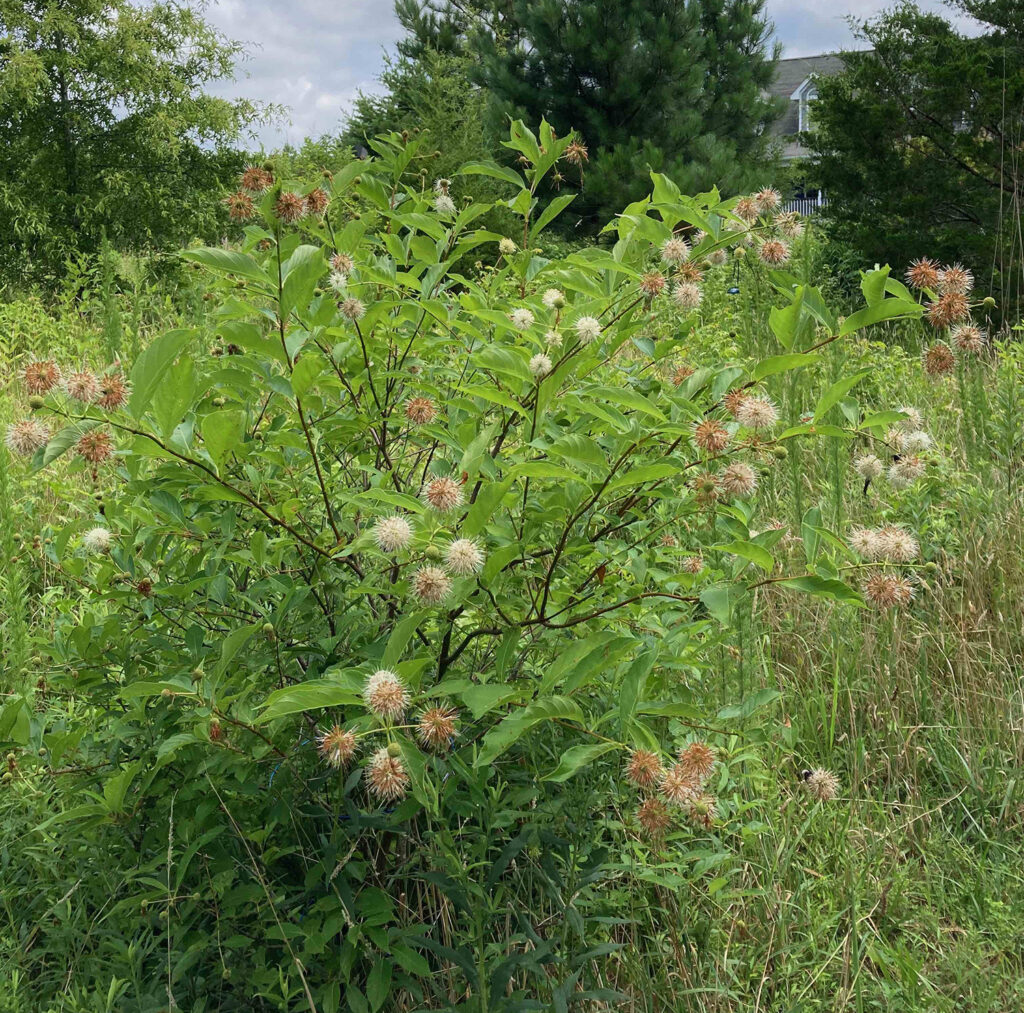
But if you have a wetland on your property and are interested in “wildlife gardening,” you should consider Salix caroliniana and S. nigra. You must have the space and the willingness to deal with the rapid growth and wind blown seeds.
Indeed willow will almost inevitably arrive at any pond by its wind-dispersed seeds and should be hand pulled from any undesirable location sooner rather than later. In this sense it could be considered invasive by some, although it is just doing what comes naturally.
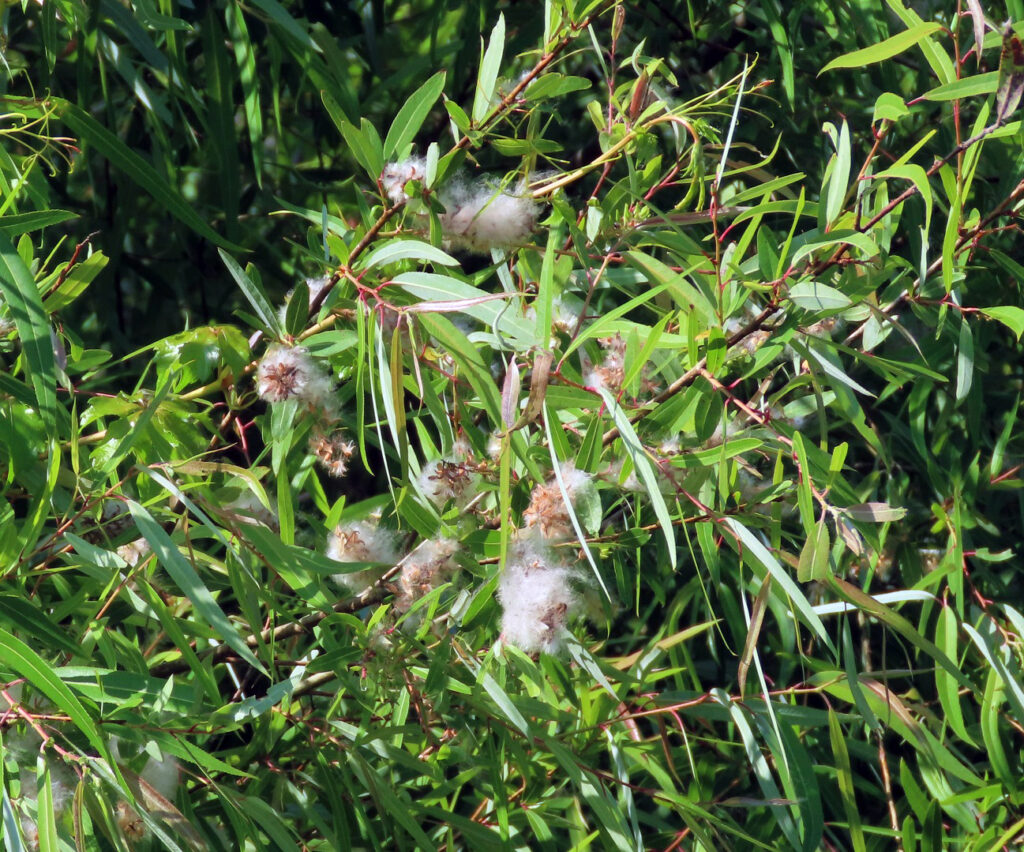
Willow does best in wetlands that fluctuate in depth seasonally. It is one of the few native small to medium size trees that can grow in deep water but it does produce adventitious roots along the trunk to cope with low oxygen problems when water is high. On developed land and in the wild, willow can sometimes multiply into a densely grown thicket; however, because of a prevalent and harmful attitude that wetlands should consist primarily of open water with little emergent vegetation including shallow areas, willow is often designated for removal. Because willow can slow the flow of water downstream, it can be beneficial on developed land with stormwater management areas. Willow encourages groundwater infiltration and nutrient retention, always a good management technique.
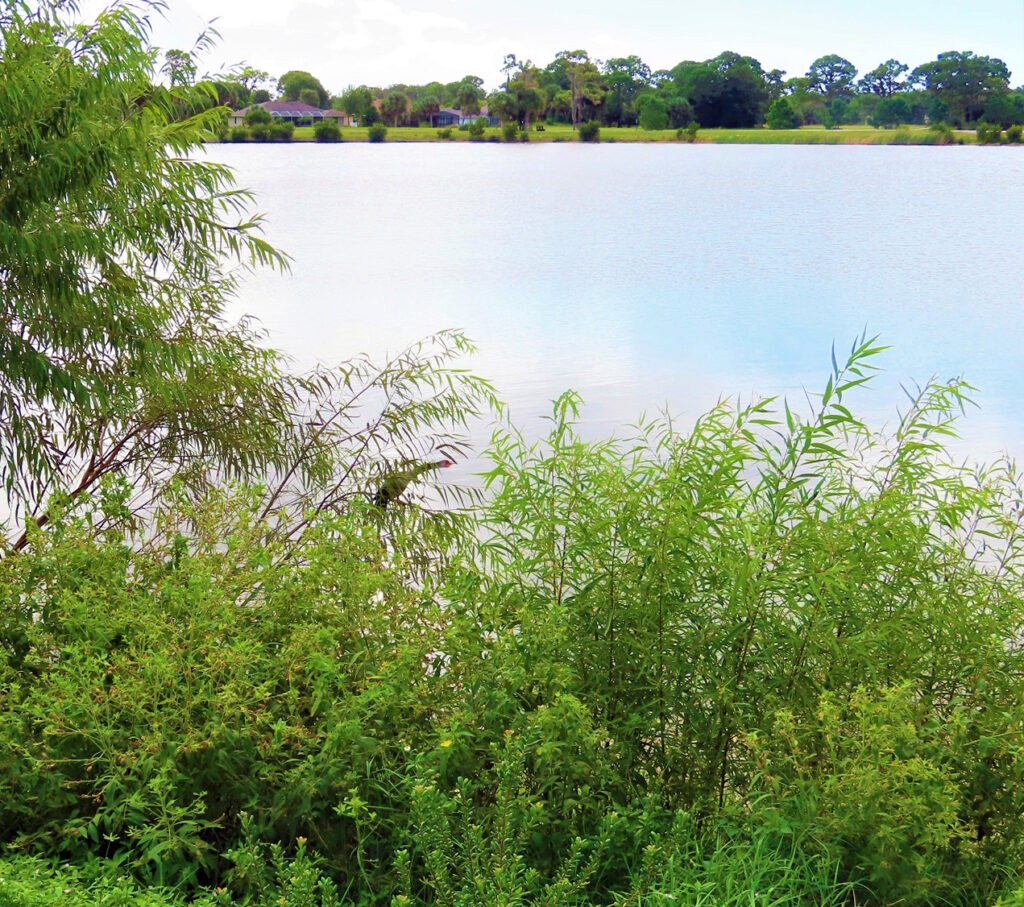
Many of the problems for which willows are blamed are due to management goals that are too narrowly defined, especially by not allowing for as much biodiversity as possible. Dogmatic adherence to outdated concepts of wetland management causes skepticism of the benefits of Salix caroliniana. A naturally functioning wetland does not consist of a barren wasteland of open water and mowed banks, bulkheads or rip rap, but must contain a balanced medley of native plants in all of their natural habitats.
Certainly as a minimum, willow should be allowed to inhabit a substantial percentage of both natural and constructed wetlands. It should be an important part of the native flora that grows along the edges and shallow areas of wetlands. Willow is a wonderful native plant for wildlife and should be encouraged as much as possible.
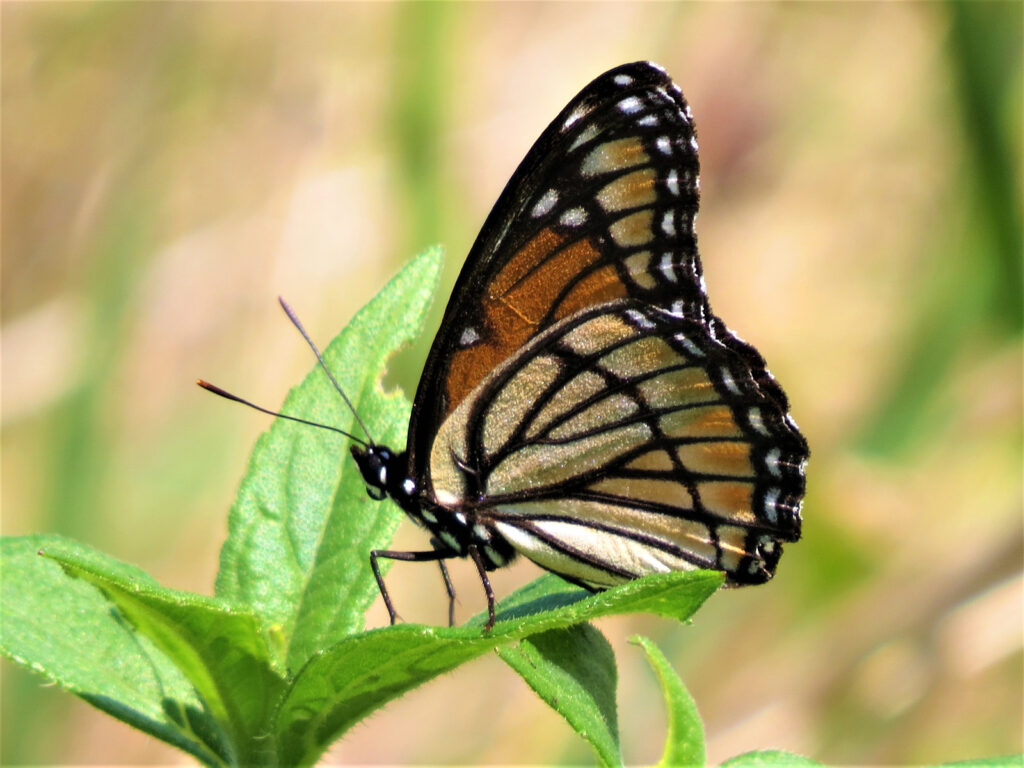
The beautiful Viceroy butterfly (a toxic mimic of the Monarch) requires willows as its larval food. Many birds and other animals use willows for foraging, perching, cover, and nest building. In most shallow natural wetlands, willows will occur in the deeper center portion only with up to five types of different mostly herbaceous species elsewhere.
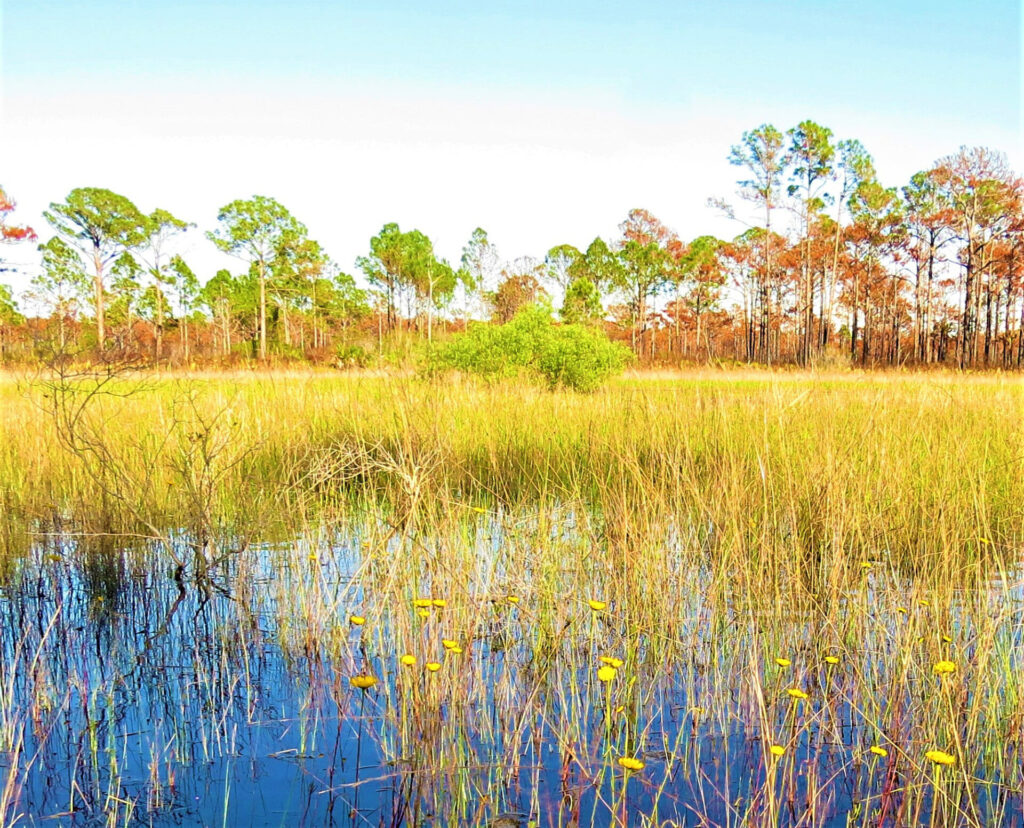
The spring flowers of willow attract many insects and as a result are a bonanza for foraging birds. Magee Marsh, the famous Ohio warbler migrant trap on the southern shore of Lake Erie, is attractive to many birds due to the flowering willow trees.
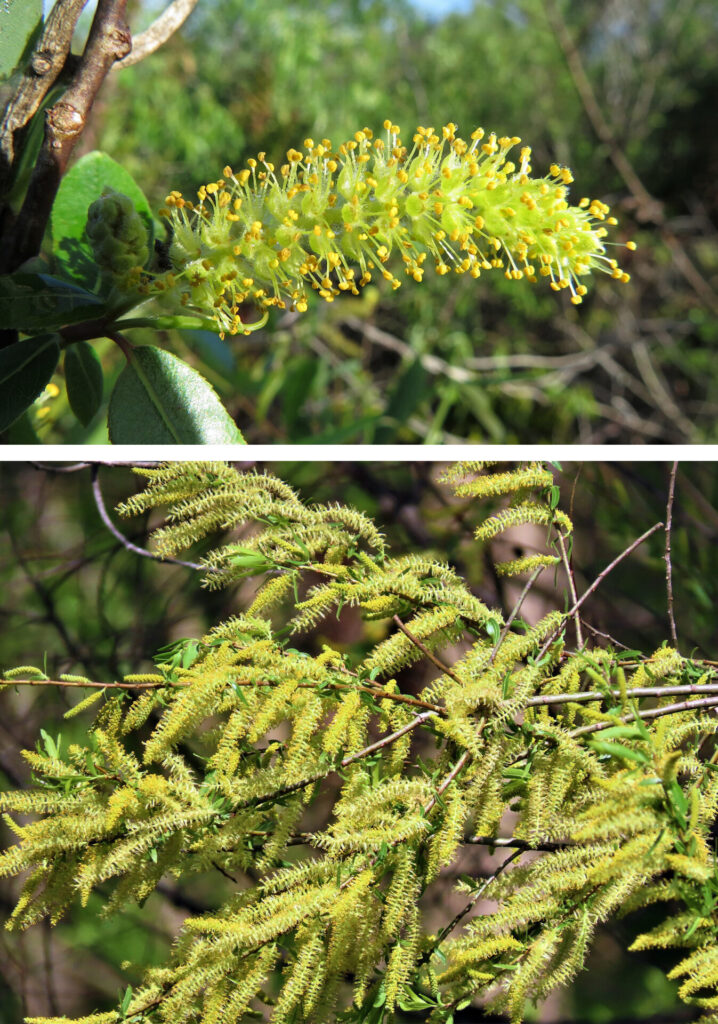
Willow offers a potential natural way of controlling invasive non-native Torpedo Grass (Panicum repens) and native cattails, and other light-requiring invasive weedy plants along the banks. However, the spraying of herbicides to control non-native weeds, such as Torpedo Grass, unfortunately also eliminates all the beneficial native species as well, including willow. A new approach is definitely needed and the planting of willow as shade along the banks needs to be tested. The philosophy by which most perceived problems are confronted with spraying of toxic chemicals must stop!
Management goals
Our management goals for wetlands should be a harmonious blending of native species that self regulate their populations with minimal herbicide use and manual labor and a natural seasonal cycle of fire. When you clear the land or restore/construct wetlands, you will have decades of changes as succession proceeds inexorably towards the climax conditions. We should learn by observing and it would often be appropriate to try different strategies for managing willows in different areas. Let us try to avoid dogmatic approaches to habitat management and the “one size fits all” approach.
It seems likely that some aspects of the invasive nature of wetland plants such as cattails and willows can be laid at the door of civilization’s environmental disturbances. For example, the fact that cattails are so invasive in lakes, ponds and the Everglades (where they displace native sawgrass and other wetland plants) generally is due to human-caused nutrient pollution, especially excess nitrogen and phosphorus. Manatees are dying from a similar effect of high nutrients that favor phytoplankton in the water column over their food of bottom-growing submerged aquatic vegetation.
Some control measures
For willows, it has been suggested that the widespread and insidious decrease in runoff in streams due to changes in the watersheds, diversion of water, depletion of groundwater, and other factors, lead to greater survival of willows. In the past, very high water levels would have killed many willows, especially young ones that could not survive the depth and length of submergence. Without that control on willow populations, they can become a nuisance by densely growing along wetland edges and in places previously denied to them. If true, this requires some control measures that do not do more damage than good. Removal of all willows is not required, just a return to natural levels of population growth.
By Bill Dunson
Photos courtesy Bill Dunson
Native Plant News – Summer 2023

William Dunson, Ph.D. in zoology, is a native of Atlanta, Georgia where he skipped out on his final high school year. Today he believes in sharing his lifetime of knowledge with others and recently led two NC Native Plant Society tours of his North Carolina property. He attended Yale University and University of Michigan, and retired from a 34-year teaching and research career as a professor of biology at Penn State University. In addition to being a prolific scientific writer, after retirement he worked as biologist for the Seminole Tribe and helped transform a 107-acre Virginia farm into a nature preserve.
